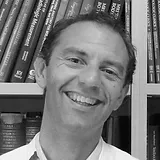
Walter Noordzij
dr.
In my profession as a nuclear medicine physician, I’m involved in both clinical and scientific applications of nuclear medicine and radiology modalities. My main interests include haematology, general oncology, radio-immunotherapy, and especially the implementation of new therapeutic strategies. Currently, I have a special interest in imaging post-transplant lymphoproliferative disease, as well as radio-immunotherapy in chemotherapy refractory (non)-Hodgkin’s lymphoma.
The radiology job market in the Netherlands: which subspecialties and other skills are in demand?
Published in: European Radiology
Access to document
10.1007/s00330-023-09983-5
document
Objectives: To evaluate the current job market for medical specialists in radiology and nuclear medicine (NM) in the Netherlands. Methods: Vacancies posted for radiologists and nuclear medicine physicians in the Netherlands between December 2020 and February 2022 were collected and analyzed. Results: A total of 157 vacancies (146 for radiologist and 11 for nuclear medicine physicians) were included. The most sought-after subspecialties were all-round (22%), abdominal (19%), and interventional radiology (14%), and 30% of vacancies preferred applicants with additional non-clinical skills (research, teaching, management, information and communications technology...
A framework to integrate artificial intelligence training into radiology residency programs: preparing the future radiologist
Published in: Insights into Imaging
Access to document
10.1186/s13244-023-01595-3
document
OBJECTIVES: To present a framework to develop and implement a fast-track artificial intelligence (AI) curriculum into an existing radiology residency program, with the potential to prepare a new generation of AI conscious radiologists. METHODS: The AI-curriculum framework comprises five sequential steps: (1) forming a team of AI experts, (2) assessing the residents’ knowledge level and needs, (3) defining learning objectives, (4) matching these objectives with effective teaching strategies, and finally (5) implementing and evaluating the pilot. Following these steps, a multidisciplinary team of AI engineers, radiologists, and radiology...
Marjorie van Kooten, C O Tan, E I S Hofmeijer, Peter van Ooijen, Walter Noordzij, Marjolein Lamers, Thomas Kwee, Rozemarijn Vliegenthart, Derya Yakar
Neuroendocrine neoplasm imaging and image-guided therapies
Published in: Multimodality Imaging and Intervention in Oncology
Access to document
10.1007/978-3-031-28524-0_19
document
This chapter details the nature of gastroenteropancreatic neuroendocrine tumours, specified to the different anatomical regions of appearance. This categorization is meaningful as it influences not only disease aetiology, but also diagnostic and therapeutic methods. Neuroendocrine tumours are characterized by their specific receptor expression leading to the development of multimodal image techniques and treatments. Most attention is given to peptide receptor-targeted radiotherapy (PRRT) which exemplifies the integration of receptor targeting with multiple diagnostic techniques and methods of nuclear labelling.
E. B. Veenstra, W. Noordzij, Paola Anna Erba
Reduction of Metabolic Active Tumor Volume Prior to CAR T-Cell Therapy Improves Survival Outcomes in Patients with Large B-Cell Lymphoma
Access to document
10.1182/blood-2023-173947
Kylie Keijzer, Janneke W. de Boer, Jaap A. van Doesum, Walter Noordzij, Gerwin A. Huls, Lisanne V. van Dijk, Tom van Meerten, Anne G.H. Niezink
Current and Future Use of Long Axial Field-of-View Positron Emission Tomography/Computed Tomography Scanners in Clinical Oncology
Published in: Cancers
Access to document
10.3390/cancers15215173
document
The latest technical development in the field of positron emission tomography/computed tomography (PET/CT) imaging has been the extension of the PET axial field-of-view. As a result of the increased number of detectors, the long axial field-of-view (LAFOV) PET systems are not only characterized by a larger anatomical coverage but also by a substantially improved sensitivity, compared with conventional short axial field-of-view PET systems. In clinical practice, this innovation has led to the following optimization: (1) improved overall image quality, (2) decreased duration of PET examinations, (3) decreased amount...
Mostafa Roya, Samaneh Mostafapour, Philipp Mohr, Laura Providência, Zekai Li, Johannes H van Snick, Adrienne H Brouwers, Walter Noordzij, Antoon T M Willemsen, Rudi A J O Dierckx, Adriaan A Lammertsma, Andor W J M Glaudemans, Charalampos Tsoumpas, Riemer H J A Slart, Joyce van Sluis
